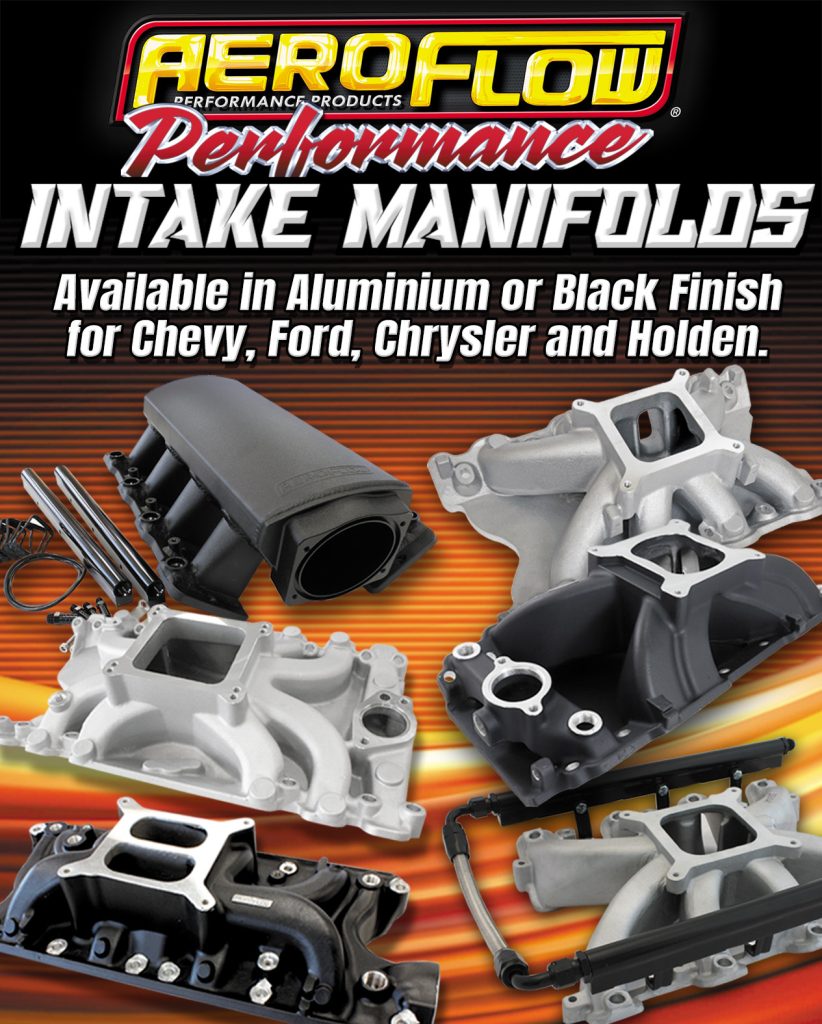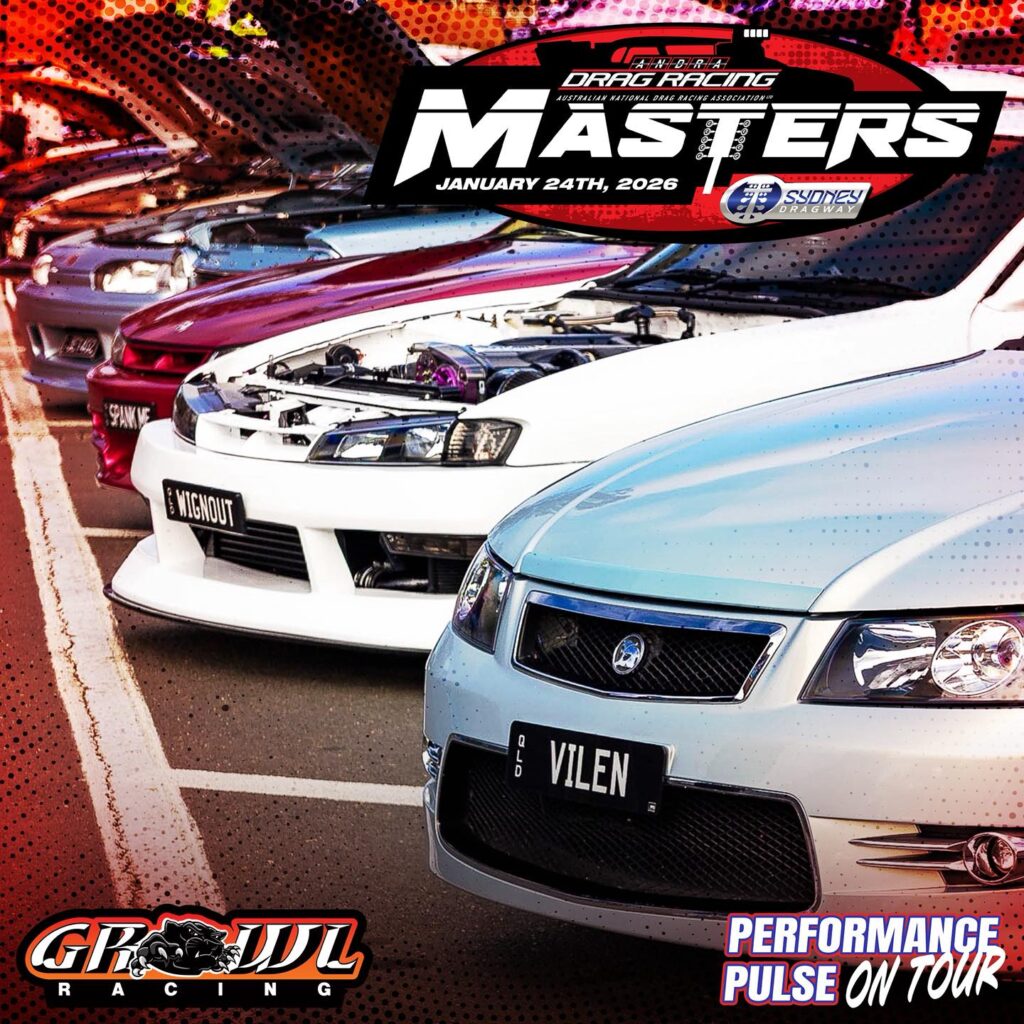 In part two of his epic editorial, Ken Lowe looks for answers on why racers fall in, or out, of love with the sport. The answers are perhaps more with in themselves than from others.
In part two of his epic editorial, Ken Lowe looks for answers on why racers fall in, or out, of love with the sport. The answers are perhaps more with in themselves than from others.
Let’s start with what I asked earlier, where do new racers come from? I know how I got started, or should I say when the ‘infection’ began, because for me it is truly is a disease – not that I have sought a cure.
I am quite happy with my disease and the association of all my diseased friends. Many years ago I saw a sign on the back of a dragster trailer with a skull and crossbones on it with the instructions that this vehicle contains a disease for which there is no cure. As normal, the humour was the truth in the story.
I grew up at a time in history when for us the car was several things. It was freedom, an escape, a way to get out and interact with others of my age, be with my friends, it was social. For many of us it was a status symbol, a test bench, a tool that rewarded our egos with a sense of accomplishment.
 Is motor racing, car racing and drag racing in particular still relevant today? That is part of my concern. Does it do the same things it did forty years ago? I think maybe not.
Is motor racing, car racing and drag racing in particular still relevant today? That is part of my concern. Does it do the same things it did forty years ago? I think maybe not.
It is common knowledge that life today is radically different than it was forty years ago. The internet has changed everything. The fact that I can write this and post it for all to see is testament to the reach of the internet.
Between Facebook, all the social network stuff and video games are we not all becoming a little isolated in our togetherness? Is today the car just a form of transportation where for many of us in the past it was an extension of our personalities?
I grew at a time when in the 1960s some race tracks would have qualified fields of 64 Top Fuel cars.
That was possible back then because it was affordable. All racers ran what they could buy at the wrecking yards because that is where all the parts came from. There were very few aftermarket parts available other than the basics. Clutch management was your left leg, the ignition systems of the day were marginal at best and if you can’t light it you can’t burn it. This means anyone could win.
The first thing that happened was better tires, better tires made the front engine dragster obsolete, the rear engine dragster was perfected and then in 1977 Keith Black made the first aluminium block.
At first it would appear having a block that was repairable was a good thing but it let racers lean on the parts harder, made the cars quicker finding more weak components for which the aftermarket was happy to produce more robust replacements and so the spiral goes. Each step gradually increased the cost of going racing to the point where there could be less than 64 competing Top Fuel cars in the world.
I guess more to the point I have to ask is motor racing, and again drag racing in particular, still relevant to society today.
What is the spark that ignites the idea for someone to start racing?
The second part of the unasked question is what keeps the racer coming back to the race track. If he is winning all the races, sure he will keep coming back but that just does not happen and even if someone is on a “streak of wins” it never lasts.
What keeps a racer coming back year after year, decade after decade? Or what make them quit?
In my fifty years of drag racing I cannot count the number of people that have taken up the challenge of drag racing and raced for one race, one season or with just one car for a few years. Why?
Once, while I was tuner and crew chief on Danny Townsend’s Funny Car, a new crewman commented to me that he wanted to save up his money to build a race car and go racing. I had to point out to him that it was NOT a pile of money that he needed but a stream of money. The pool of money needed to be replenished at a rate at least as quick as it drained.
Most quit because of money or more precisely the lack of money. One must fully understand their budget limits, overreach and you will fail. One answer is that most new racers all enter the race ‘business’ thinking that the biggest expenditure of time and money is the initial construction and assembly of the race car and getting the truck and trailer (or transport) organised. Sadly I must inform that this is not the case in general.
Some racers don’t quit as much as they just park their cars. Officially they are still racers, with a race car, but they stopped taking it to the race track. There are often a few reasons for this, but the one that needs to be addressed here is if the racer does not take their car to the track because of something the local race track is or is not doing.
As mentioned earlier, no one actually races for money, if they did no one would race, because you always spend more money than you earn. Today, If you race you do so for – here it is again – respect.
Respect comes in different forms. Respect is taking home a bit more money than it cost to finish the day. If the amount you get for winning the day’s racing is substantially less than what it cost to get there on the day, that is no respect. If you lose first round you kind of expect that, but if you win and lose money, well that is just no respect.
How important is the racer who loses first round? He is the hardest racer to keep coming back. Whatever incentive packages you have had better address this racer. The racer who wins a lot needs much less motivation to return and they both pay the same entry money and they both take the tree in first round. It is part of the show. Do you want four cars there or forty? If you take care of the back of the pack the front takes care of itself.
If the race track has no racers come through the gate, what kind of show do they have for their other customers? The question is rhetorical, because there is no show and they have no product or commodity to sell their customers (spectators).
A slowly diminishing show results in a dwindling spectator base. Sadly once you lose the spectators you have to work pretty hard to get them back again.
There are categories of race classes where once the car and tow rig is packaged the biggest cost is entry and fuel to get to the track. Often these are called sportsman or entry level categories, but those categories are just a good place to race, because the ongoing costs are so minimal.
It is a good place to practice your craft, the biggest challenge is that many have found this and often these categories are the most challenging to win in because it is predominantly driving skill that wins the race and not a cheque book.
I call it the ski boat factor. A good dial your own dragster will cost about the same amount as a good ski boat and will be about as much maintenance. Actually the operating costs will be less because a ski boat uses heaps of fuel while most DYO car can race all day on fifty dollars’ worth of fuel. Less if you lose early.
Many racers choose a category to compete in because that category has a certain allure that appeals their sense of self-image. Nothing wrong with that, we all have to scratch our own personal itches.
In the “upper level” categories, if you want to call them that, as much as the car costs to build, what often blind sides new racers is the ongoing expenses.
Travel costs can add up very quickly and then plug in the amount of time away from your income generating enterprise – work.
A rule of thumb I recommend to my clients is that there are three components
to a successful racing situation:
A – The initial cost of the race car.
B – The cost of infrastructure (truck, trailer and spare parts). Generally speaking A and B will be about the same costs, within reason and practicality.
C – The one component that is seldom considered is the change in lifestyle that a successful adventure will require.
In all the upper level categories it must be understood that a time investment component is mandatory. Either you will have to pay someone to work on the car or you will have to do it yourself and that means at least two nights a week in the shed doing race car maintenance. If you add infrastructure maintenance or infrastructure improvement that night shift work requirement expands.
I can vouch for this, having raced successfully in Top Alcohol Dragster, winning three championships. For me it was a rare night that I did not work on the car until near midnight getting ready to go racing. Either working on the car, or getting spares ready, or doing maintenance on the
truck and trailer. I would race 28 races in 38 weeks and spend most of the winter getting ready for next season.
I was lucky I had a wife that was as much a motor head as I was since the reason we started dating in the first place was the car she drove. It was a 1966 Impala SS with a 427 and a set of mag wheels, at first I thought it was her boyfriend’s. When I found out it was her car, I wanted to take her out on a date as that must be my kind of girl. It didn’t hurt that she was pretty too. Married 21 years before she passed.
The one nugget of advice I give a lot of clients is to pick your destination before you pick your journey, you will save a LOT of money by taking a direct route to your destination.
When I had my workshop in Cincinnati, Denny Fallon and his brother had a shop across the road from me. I am the second owner of a neat, nearly stock 1965 Chevelle Malibu, 300HP 327 Powerglide, power steer, power brakes, I bought it off the lady that bought it new and only drove it for three years as her husband drove and she didn’t and he died in 1968.
Denny had a Chevy II of nearly the same vintage and condition. On nice spring days we both would get our special cars out of the garage and drive them to work.
One day Denny put a set of slicks on his Chevy II and took it to the drags.
Over the next few years, the car got a six point cage, back half with four link, front half and then a complete tube chassis. It became a panel car. It was a nice car but if a bit of planning took place he could have had a nice street Chevy II and a Chevy II race car as well and it would have been less
money. I still have my Chevelle and Denny does not have his Chevy II.
The final chapter of the story is that the next year he built a rear engine dragster. If he would have only had a plan he could have saved a lot of time and a lot of money. I really think he never really considered the rear engine dragster to begin with. Why?
During my university days I took a philosophy course. The final exam room had about 250 people in there; I was about in the middle of the room. The professor walked in and walked to the black board and wrote the exam question on the black board. The question was ‘Why?’
I thought for a few moments and began writing my answer. Shortly after, I noticed on student near the front of the class rose and turned in his paper after a few moments. I continued to write, I wrote five pages on WHY. Talk about expanding the bull shit!
Finally after nearly forty five minutes I turned in my paper along with many others who were finishing as well. I got a C.
Only one person got an A out of the class, he was the first to turn in his paper. His paper said ‘Why Not?’ For me the exam itself was a learning experience, not just a test. Life is like that. Cut away the bullshit and find the core answer.
What do you think about Ken’s views? Leave your comment below! To see the first part of his article, click here.
{fcomment}















